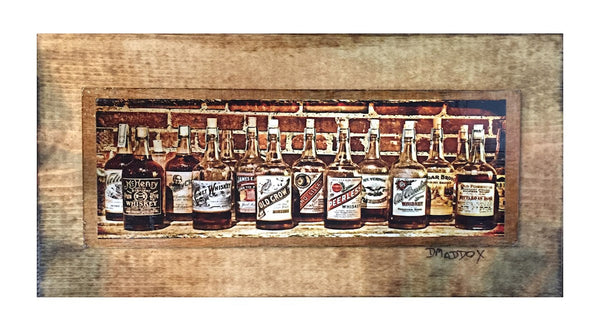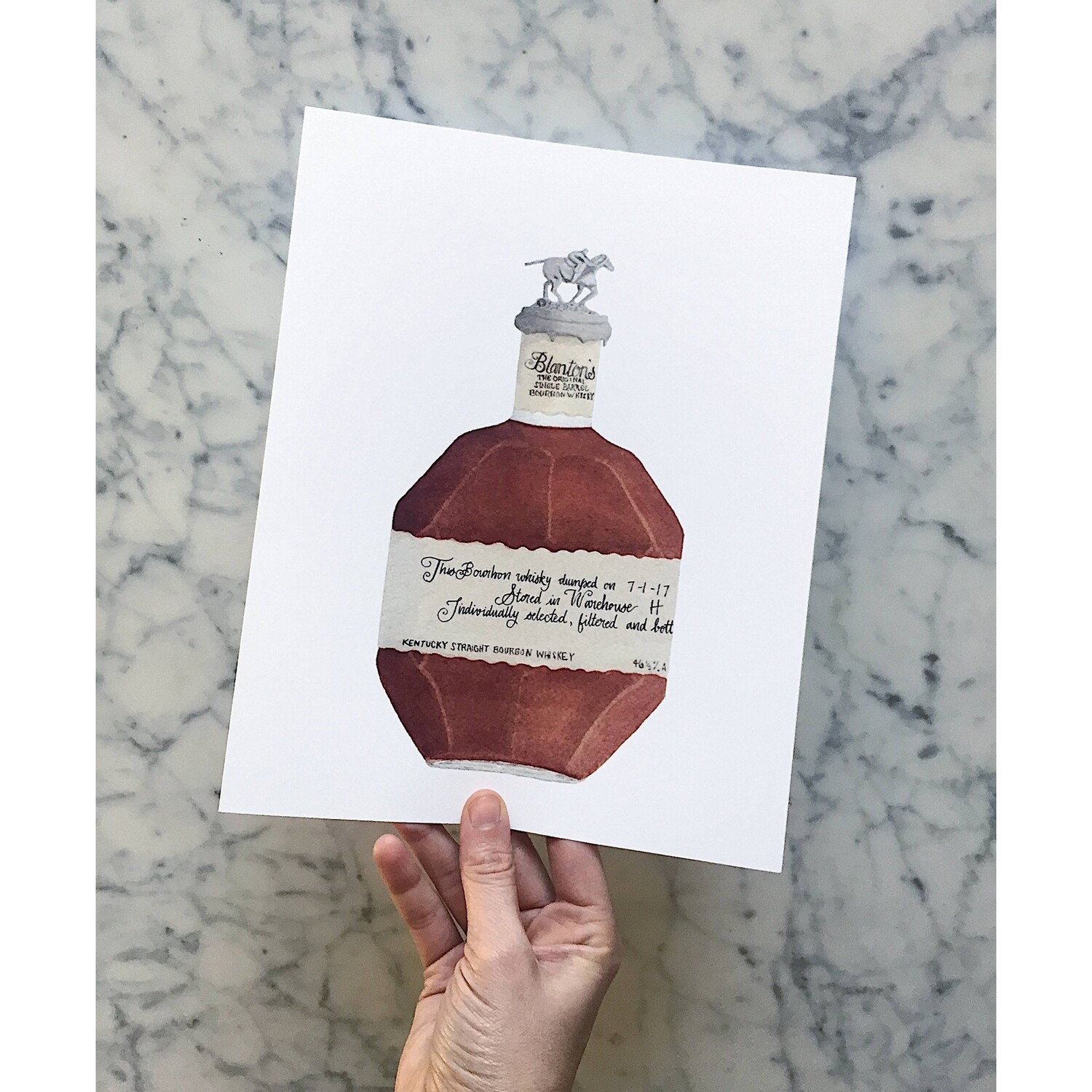Limited Edition: Discover Exclusive Bourbon Art Parts for Collectors
Wiki Article
The Relevance of Whiskey Art in Celebrating Heritage and Workmanship in the Beverage Industry
The elaborate partnership in between scotch art and the celebration of heritage and workmanship within the beverage industry can not be overstated. Through thoughtfully designed containers and tags, whiskey brand names envelop their historic origins and the artisanal abilities that define their manufacturing techniques.The Historic Origins of Whiskey
At the heart of bourbon's allure exists a rich tapestry of historical origins that trace back to ancient civilizations. The origins of whiskey can be linked to the purification methods of the Sumerians and Babylonians around 2000 BCE, where early types of fermented grain beverages started to emerge. It was in the Middle Ages that the art of purification developed substantially, particularly in Ireland and Scotland, leading to the development of bourbon as we understand it today.
The term "whiskey" itself stems from the Gaelic word "uisce beatha," suggesting "water of life." This phrase highlights the cultural significance of whiskey in Celtic societies, where it was often connected with rituals, events, and public bonding. By the 15th century, purification became an identified craft within reclusive areas, leading the way for the establishment of lawful distilleries.
As profession routes broadened, whiskey's popularity expanded, going beyond regional boundaries and capturing the passion of connoisseurs worldwide. Limited Edition. This historic journey reflects not just the craftsmanship behind scotch manufacturing yet also its important role in cultural and social contexts, noting it as a significant drink throughout history
Artistic Expression in Branding
Scotch branding stands as a compelling intersection of virtuosity and commerce, where aesthetic identification plays a crucial duty in shaping consumer assumption. The aesthetics of scotch labels, packaging, and advertising products reflect not only the brand's tale however likewise its core worths and heritage. Via imaginative expression, distilleries communicate a story that reverberates with consumers, evoking feelings and stimulating links.The usage of color, typography, and images in branding serves to differentiate products in a saturated market. As an example, traditional motifs may stimulate a sense of authenticity and workmanship, while modern-day layouts can indicate development and forward-thinking. This critical imaginative instructions enhances brand name acknowledgment and commitment, permitting consumers to create an individual relationship with the bourbon they select.
Moreover, imaginative expression in branding often offers as an event of regional heritage. Distilleries frequently include local signs or historic references right into their styles, developing a sense of place that welcomes customers to engage in a wider social experience. Ultimately, the creativity behind scotch branding not only enhances aesthetic appeal however likewise improves the total narrative of the brand, promoting a much deeper appreciation for the workmanship and heritage ingrained in each bottle.
Craftsmanship in Bottle Design
The artistry apparent in bourbon branding expands beyond visual identity to include the craftsmanship associated with bottle layout. Each bottle serves as a vessel not simply for the spirit within, however also for the story it outlines its tradition, top quality, and beginning. The design process needs meticulous focus to detail, as elements such as form, product, and closure contribute considerably to the overall assumption of the whiskey.Craftsmanship in container design includes selecting top quality glass that can improve the bourbon's color and clearness, while additionally giving a responsive experience for the consumer. The silhouette of the container need to be both practical and cosmetically appealing, commonly reflecting the heritage of the brand name. Lots of distilleries go with special forms or embossed logos that evoke a feeling of credibility and history.
Furthermore, the tag design and typography play a vital function in interacting the brand name's narrative. Whiskey Art. A well-crafted container not just captivates the consumer's eye yet additionally reinforces the brand's dedication to quality and tradition. In see this page this way, the workmanship of bottle style becomes a crucial aspect of the whiskey experience, combining artistry with an extensive respect for heritage
Social Relevance of Scotch Art
Commemorating tradition and workmanship, the social importance of bourbon art goes beyond mere aesthetic appeals, linking with the historical and social narratives of the areas from which it originates. Each bottle serves as a canvas, depicting the distinct tales, mythology, and customs that have actually formed neighborhood whiskey-making techniques. The detailed designs typically reflect the heritage of the distillers, including icons and concepts that resonate with the culture and values of their neighborhoods.
Furthermore, whiskey art plays an essential duty in common celebrations and events, working as a substantial link between individuals and their shared experiences. By valuing the virtuosity in whiskey packaging, consumers grow a much deeper understanding and regard for the craft, ultimately enriching their satisfaction of the drink itself.
Modern Trends in Scotch Presentation
In the last few years, the presentation of bourbon has actually evolved to reflect contemporary preferences and patterns while still recognizing typical craftsmanship - Bourbon Art. Distilleries are significantly concentrating on aesthetic components that boost the overall alcohol consumption experience, connecting the void in between heritage and modernityCutting-edge container layouts have emerged, typically incorporating lasting materials and imaginative tags that tell compelling tales. Several brand names currently collaborate with regional musicians, instilling their items with one-of-a-kind visual expressions that resonate with consumers. Additionally, limited-edition releases are often packaged in collectible containers, including value and appeal for connoisseurs.

Conclusion
To conclude, bourbon art works as a crucial conduit for revealing the heritage and workmanship integral in the beverage market. Via detailed Whiskey Art branding, innovative bottle styles, and culturally substantial imaginative components, whiskey brands efficiently recognize their practices and attach with consumers. hop over to these guys This creative narrative not only raises the admiration of bourbon yet likewise enhances area identification and pride among manufacturers. Ultimately, scotch art plays an essential duty in preserving and commemorating the abundant cultural tapestry of whiskey-making.

Craftsmanship in bottle style entails selecting premium glass that can enhance the scotch's shade and clearness, while also offering a responsive experience for the consumer. In this method, the workmanship of bottle style becomes a vital facet of the whiskey experience, merging artistry with an extensive respect for heritage.
In conclusion, whiskey art offers as an essential avenue for expressing the heritage and craftsmanship inherent in the beverage industry.
Report this wiki page